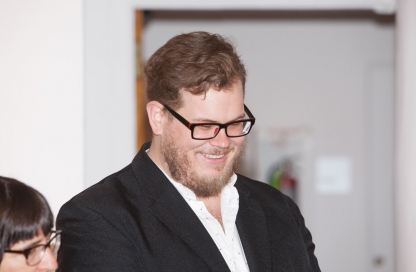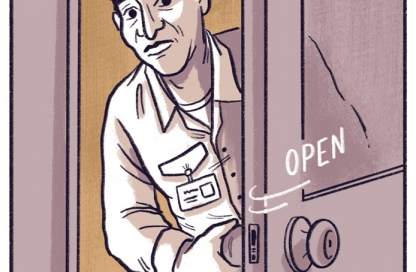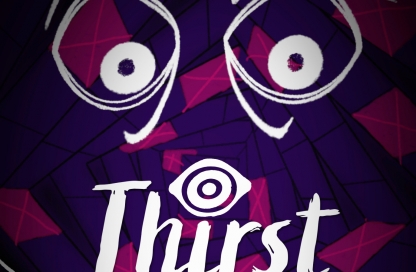Leonard Marcus guides us through the business of children’s book publishing
To write about Leonard Marcus is to write about the history of children’s books. He’s written, edited and curated some of the most comprehensive and respected examinations of the art and business of children’s books. His books include The Annotated Phantom Tollbooth, Margaret Wise Brown: Awakened by the Moon and Show Me a Story! He also curated The ABC of It: Why Children’s Books Matter at the New York Public Library (you can watch the NYPL video at the end of the interview to see Leonard speak about the history of the art form).
We had a chance to ask Mr. Marcus a few questions about his Continuing Education class, The Business of Children’s Book Publishing. If you plan on attending, you should check out Mr. Marcus’ book DEAR GENIUS: The Letters of Ursula Nordstrom. It’s the book that lots of people who work in the industry, or are thinking about it, read.
A lot of us around here are excited to attend your Continuing Education sessions about the Children’s Books market. Can you give us a sneak peek at what your plans are for the discussions?
I’ve invited 10 of the field’s most accomplished and creative people to join me in conversation about five key aspects of the business of children’s book publishing. On the first evening, Caldecott Medal winning artist Paul O. Zelinsky and the extraordinarily versatile writer Emily Jenkins (aka E. Lockhart) will discuss their experiences as children’s book creators who (not coincidentally) have collaborated on several books, explored multiple genres, and worked with a variety of publishers.
Day 2–with Neal Porter (Neal Porter Books/Macmillan) and Anne Schwartz (Schwartz & Wade/Penguin Random House)–will focus on the role of the editor.
Day 3–with David Saylor (Scholastic) and Laurent Linn (Simon and Schuster)–is all about what art directors add to the mix.
Day 4–with Jason Wells (Abrams) and Susanna Reich (a writer formerly with the marketing firm of Raab Associates)–looks at marketing and publicity techniques and strategies and what authors and illustrators can do themselves to help get their books out into the world.
Finally, on Friday, two of the field’s most influential review editors–Publishers Weekly’s Diane Roback and School Library Journal’s Luann Toth–will demystify the review process and discuss the real-world value of awards and other forms of special recognition.
I can’t imagine a better group of industry insiders from whom to learn about the children’s book world really works. And, yes, there will be plenty of time for questions.
That is quite a lineup! You’ve written extensively about Children’s Books. You’ve curated shows across the globe. Can you tell us how it became your life’s work? Was there a single moment where you realized this was your passion?
As an undergraduate history major at Yale I realized, as I was looking for a senior thesis topic, that children’s books from earlier times give us a kind of x-ray of the hopes and dreams of previous generations. I first wrote about children’s literature from this historical/cultural “angle” but then fell in love with the art in the contemporary picture books I was seeing in stores. A big moment for me came when I happened to read Goodnight Moon for the first time while browsing in a Village bookstore. I was about 28 at the time, and it struck me that Margaret Wise Brown’s 300-word-long bedtime book was real poetry for two-year-olds and that it touched me too. On the strength of that discovery, I spent the next several years writing Brown’s biography and diving deep into the backstory of the publishing world that our May class is all about, too. So, I guess if there was any single moment, my stumbling upon Goodnight Moon was it.
What trends are you seeing in the industry that surprise you?
The blending of “high” and “low” illustration–traditional “Caldecott Medal-worthy” art with comics-style visual storytelling–in the phenomenal rise of the graphic novel.
Related to this, the growing recognition that readers do not outgrow illustration at the age of 7 or 8, but can be entertained and stirred by narrative art all through their teen years and on into adulthood.
The development of a kinetic new, seemingly international style of picture book illustration mixing influences from the US, Europe, and Asia.
Other genres are seeing a surge of self-published books. Has the children’s market seen a move toward self published books at all?
There have been a few notable instances of successful self-publishing. For instance, the Eragon fantasy series started out as a self-published stand-alone novel, then happened to come to the attention of novelist Carl Hiaasen, who passed it along to his publisher, Random House. On the picture book side, The Rabbit Who Wants to Fall Asleep made it all the way to #1 in the Amazon sales rankings as a self-published book, then (of course!) attracted a great deal of commercial interest. I have yet to figure that one out, as in my opinion the book is a tedious read and is hideously illustrated. One more thing for us all to discuss in May!
What are a couple of the biggest challenges to breaking into the industry?
Publishing is increasingly numbers- and market-driven. Publishing a first book is hard for all the obvious reasons. But publishing a second book, unless the first one was a fairly solid success, can be harder. Also, establishing a long-term relationship with an editor is a less common experience than it once was because editors, at least those at the larger companies, tend to spend more and more of their time in committee meetings, and therefore have less time than they once did to cultivate personal relationships with the writers and illustrators they publish.
Having said all this, however, I think it is still an excellent time for anyone who loves children’s books to give it their best shot. Every editor I know wants nothing more than to find a talented newcomer and to help that person succeed. And the national network of librarians, teachers, booksellers, and others who all play a role in the success of a children’s book are among the most idealistic and dedicated people you will ever meet. Despite all the corporate nonsense, the children’s book world remains a world very much worth knowing!
Thanks for talking with us, Mr. Marcus! We look forward to your new Continuing Education course, The Business of Children’s Book Publishing.
Here’s some more info:
May 02 – May 06
133/141 West 21st Street
5 Sessions | Mon, Tues, Wed, Thur, Fri 6:30PM – 9:30PM
In this intensive workshop, students will receive a comprehensive introduction to the contemporary book publishing industry’s most dynamic sector. Each session will focus on a key element of the publishing process: the job (and vocation) of the children’s book writer and illustrator; the critical, supporting roles played by editors, art directors and designers; sales and marketing; librarians; and other opinion makers. Guest lecturers will include award-winning illustrators, writers and editors who provide pragmatic, insiders’ views of the talent-rich and rapidly changing field of children’s book publishing.
Here’s a video of Leonard discussing the history or children’s books for his show, The ABC of It at the New York Public Library.


